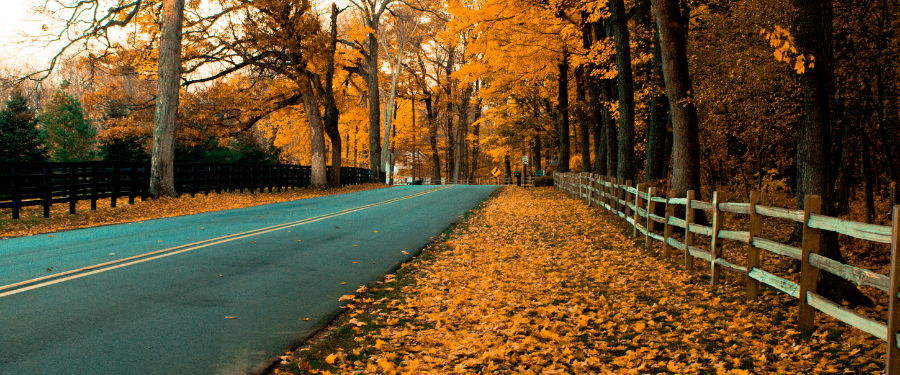Top Fall Driving Hazards (And How to Handle Them)
Fall is a favorite time of year for many. Changing leaves, plaid shirts and pumpkin spice everything is just a start. But we also get shorter days, falling leaves, and that first frost of the season.
Drivers should be mindful of these changes, as this can alter your driving in ways you might not expect.
RAIN AND WET LEAVES
As the weather cools down, the rain picks up. Combine that with lower temperatures and you’ll find your tires may have less grip than they did in the summer months.
To start, always drive cautiously in wet conditions – that includes driving slower than you would on a dry road. And be on the lookout for wet leaves, which can be as slick as ice.
It’s also important to check your tires to ensure they have enough tread. Insert a penny into your tread with Abraham Lincoln’s head upside down and facing you. If you insert the penny all the way and all of Lincoln’s head is still showing, that means your tread has worn down and it’s time for new tires.
Driving too fast for the conditions or cruising on worn tires can lead to hydroplaning.
DEER COLLISIONS
Deer are most active from October to January, especially during the dusk and dawn hours. If you’ve ever seen the aftermath of a deer collision, you know it can do severe damage to your vehicle.
Avoid deer on the roadways by slowing down during peak hours, paying attention to road signs and using your high beams to increase visibility when possible.
EARLIER SUNSETS
The days get shorter in the fall, so you’ll find yourself driving in the dark more often. This is another peak time for accidents.
Make sure you’re staying alert during nighttime hours. Be on the lookout for pedestrians and turn your headlights on during dawn or dusk hours. Keep a safe distance from other vehicles and know when to swerve if there’s an object in the road.
SCHOOL CHILDREN
The kids are back to school. The house is quieter. But if you drive just before the school day starts or after it ends…you’re in for lots of crosswalks and bus stops.
Since more kids are walking and biking to school, you’ll need to stay alert around schools and neighborhoods. Be aware of bus safety and school drop-off procedures as well. And if you’d like to avoid the risk altogether, consider finding a new route to avoid these high-traffic areas.
It’s always important to be prepared. But even the most cautious drivers can find themselves face-to-face with something unexpected.

